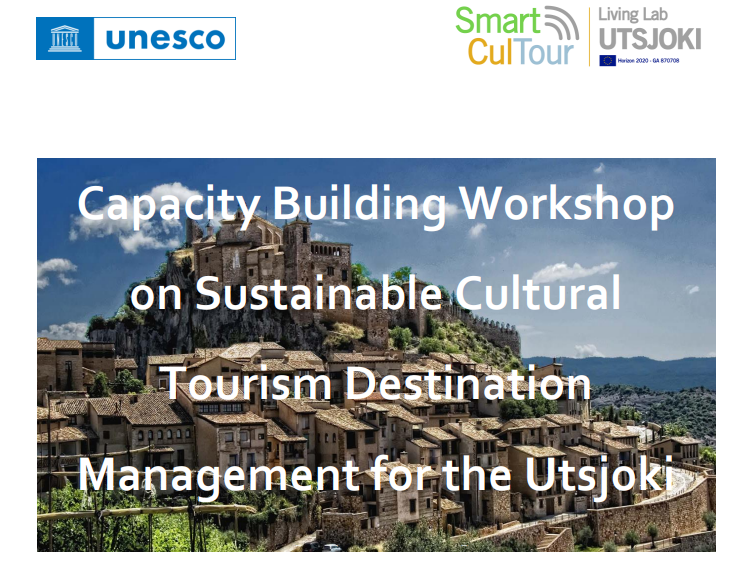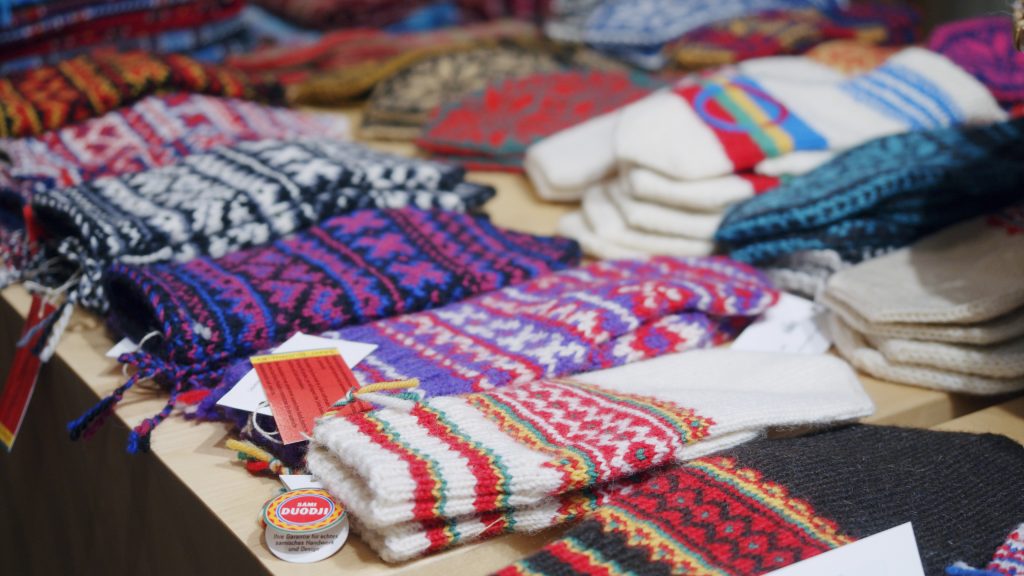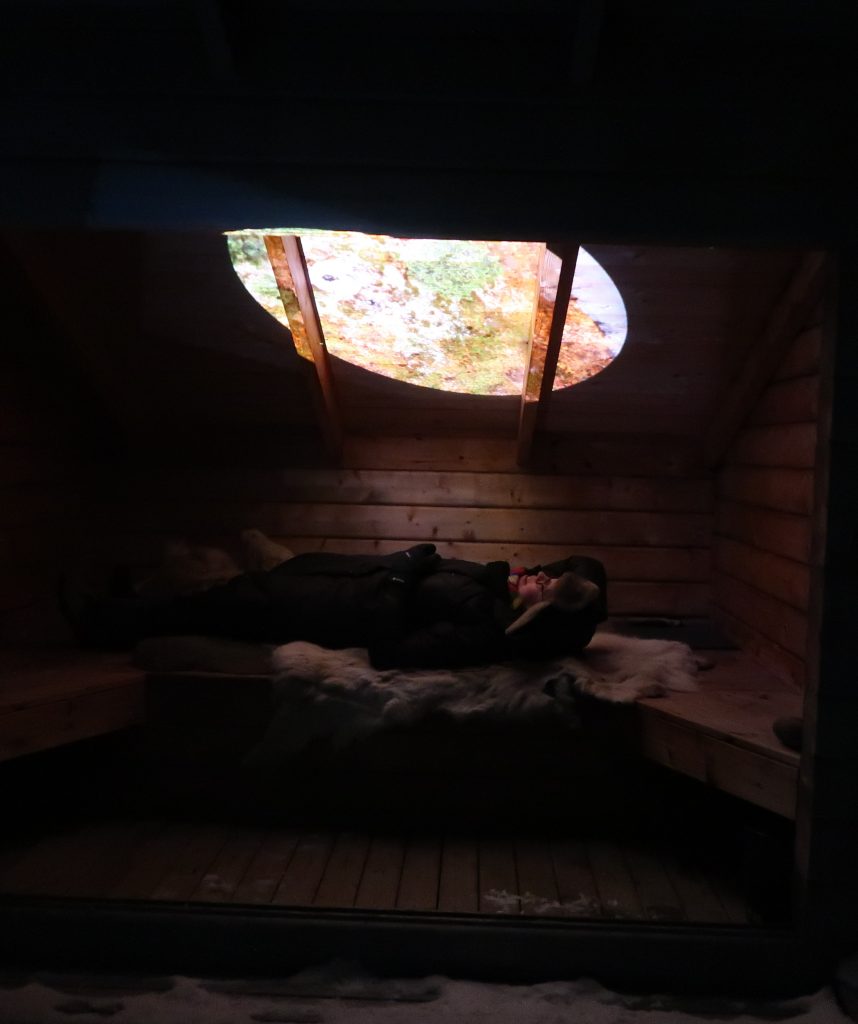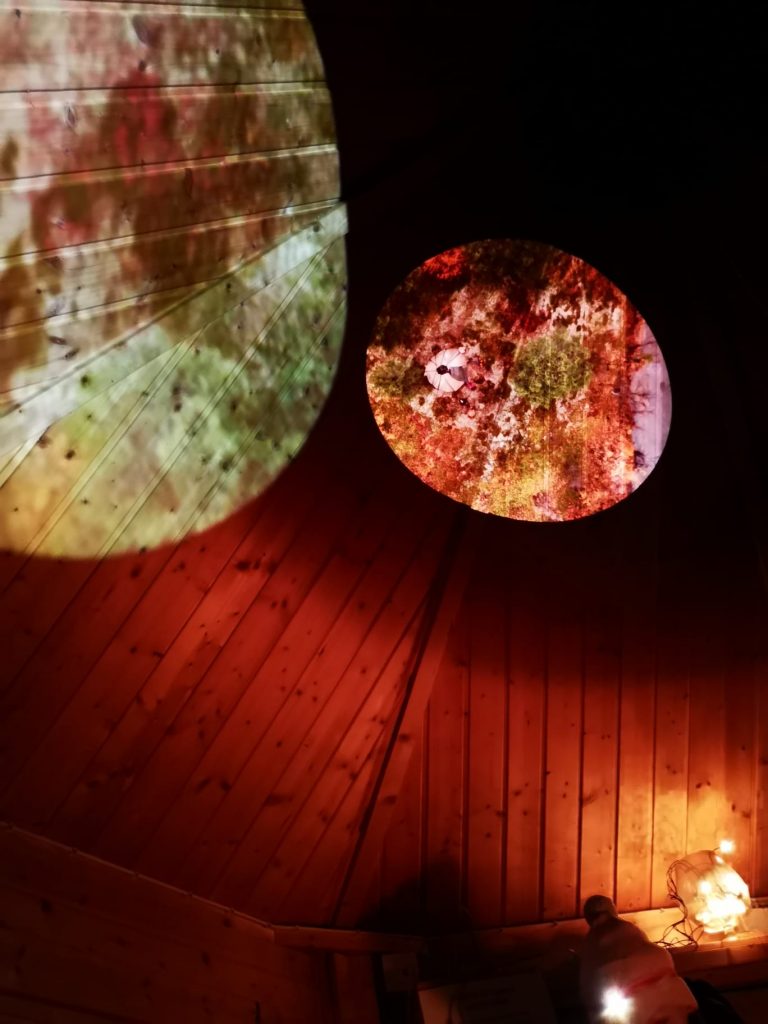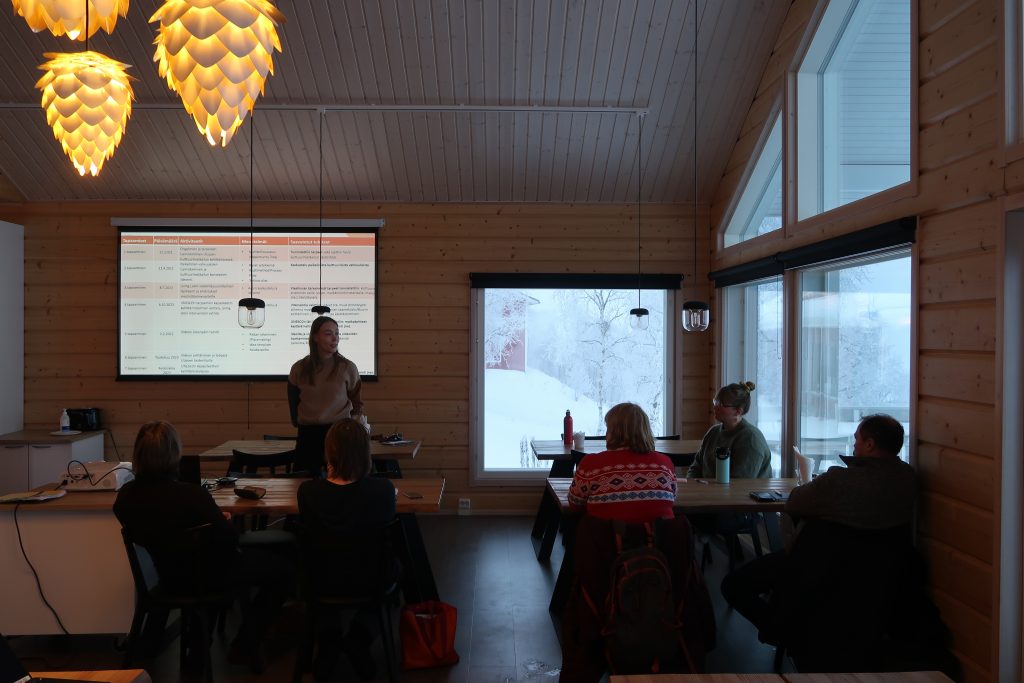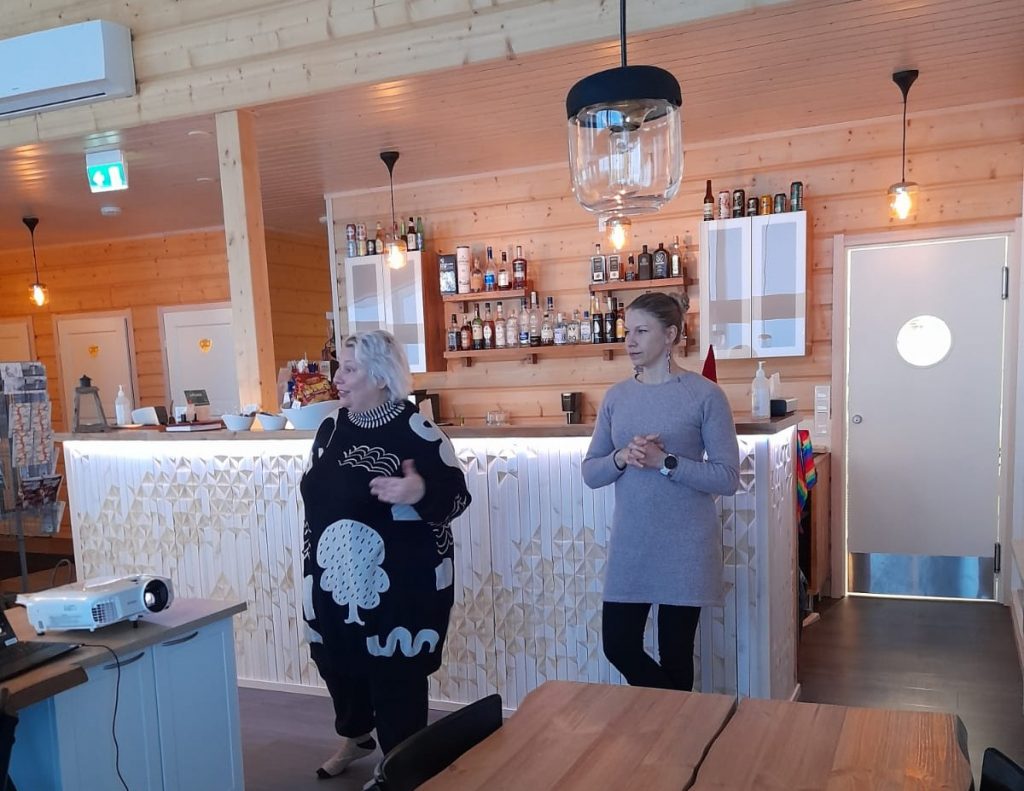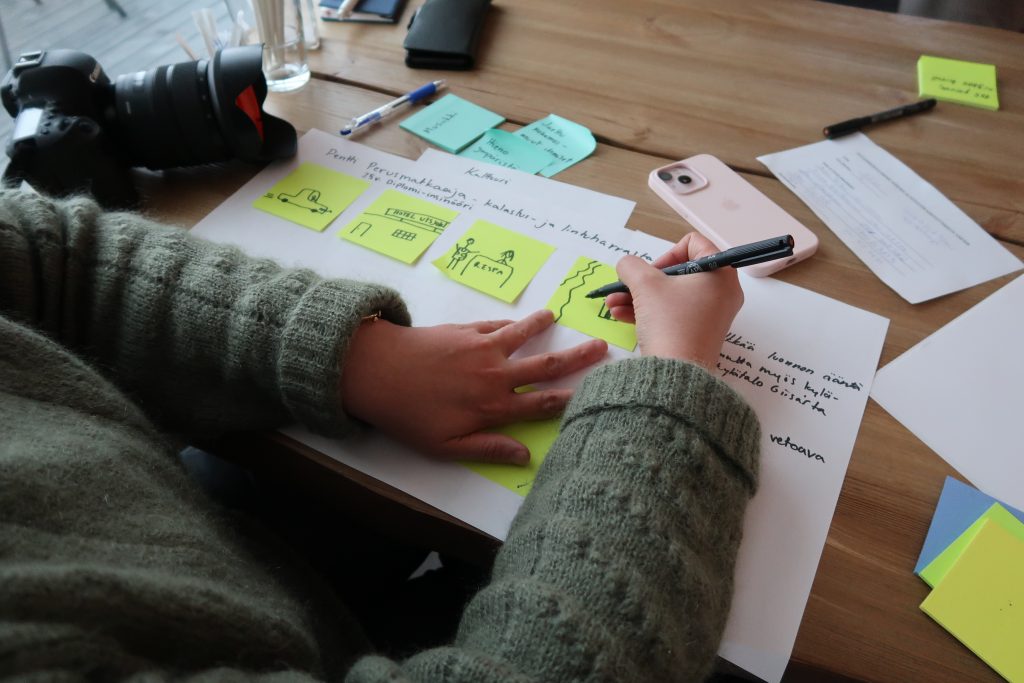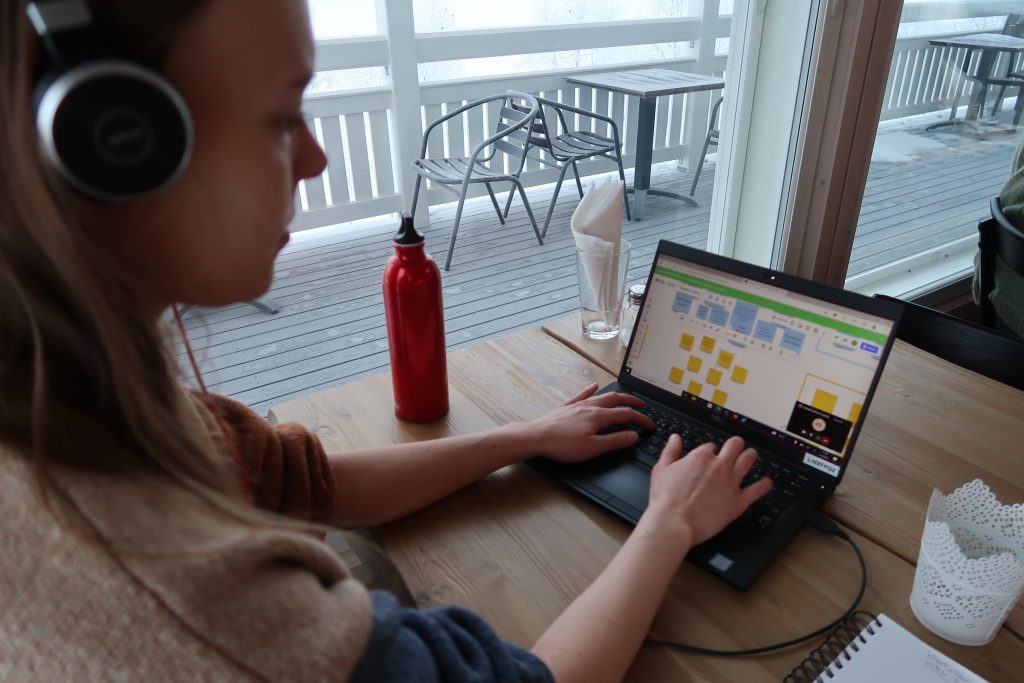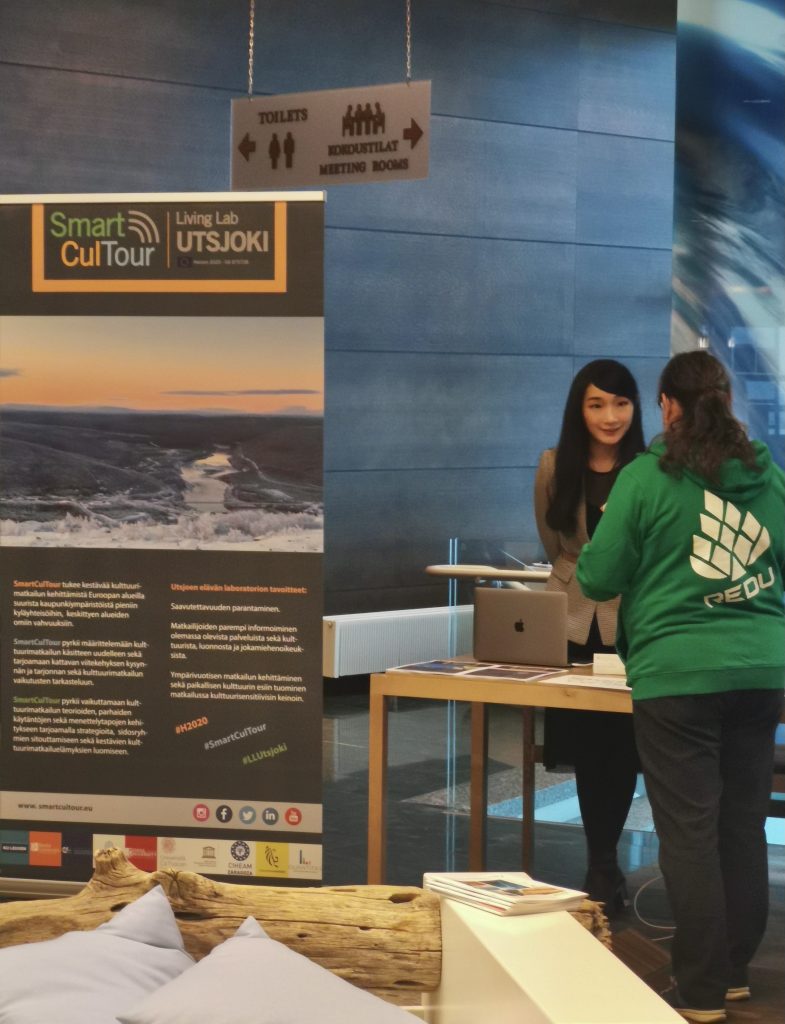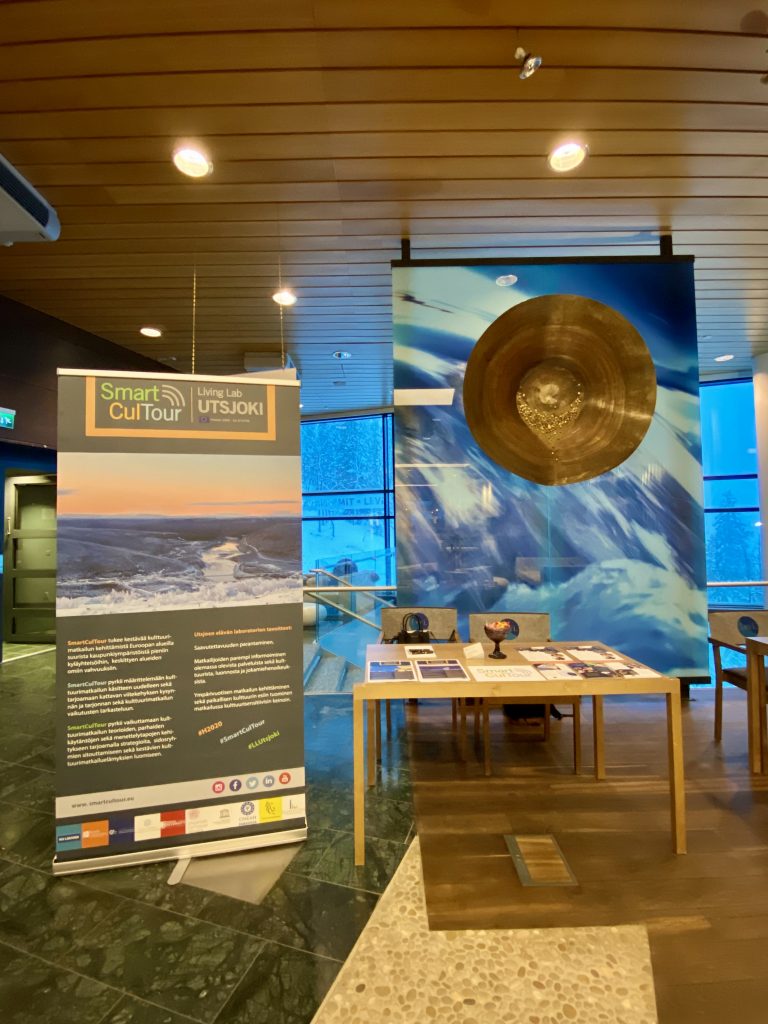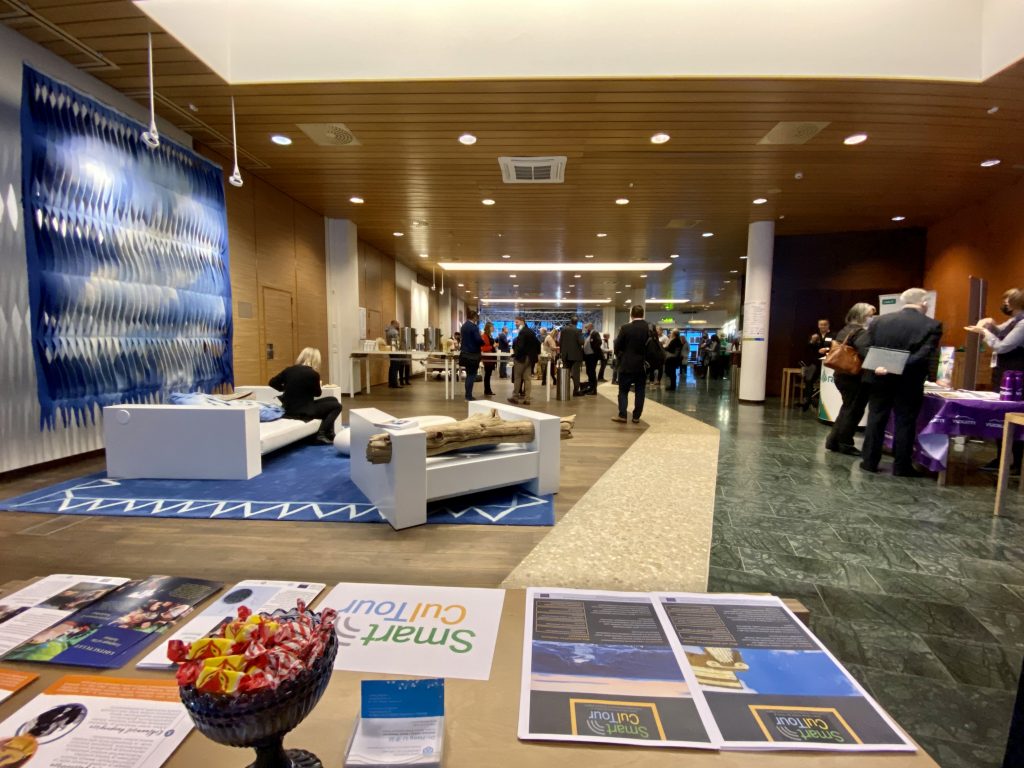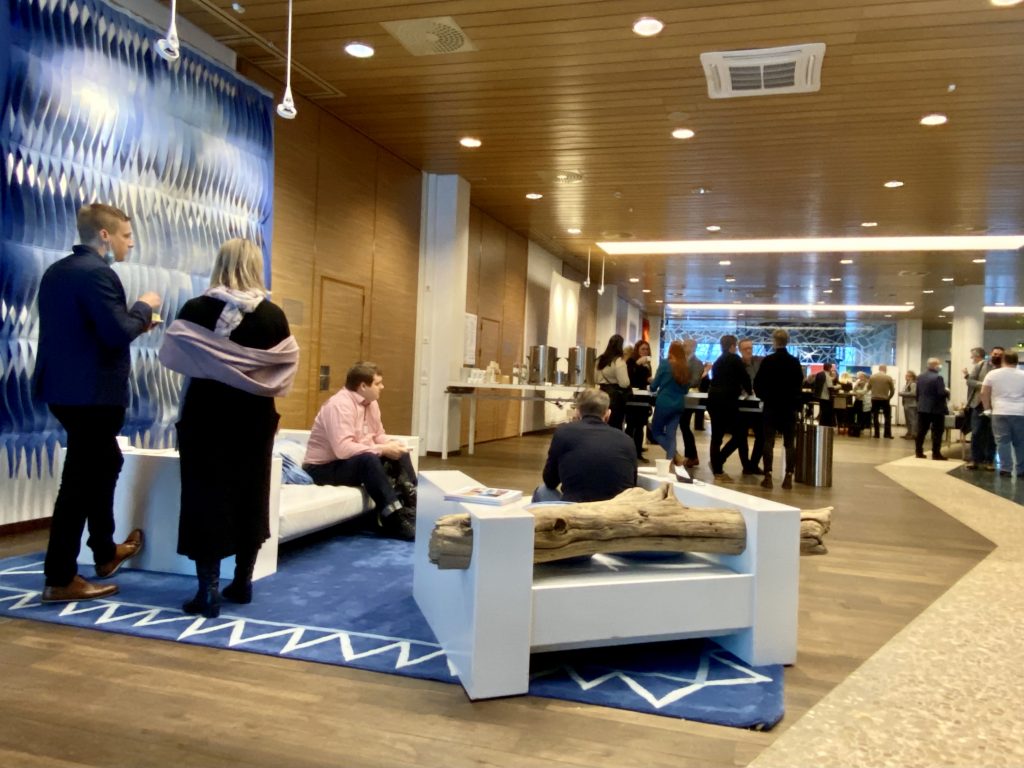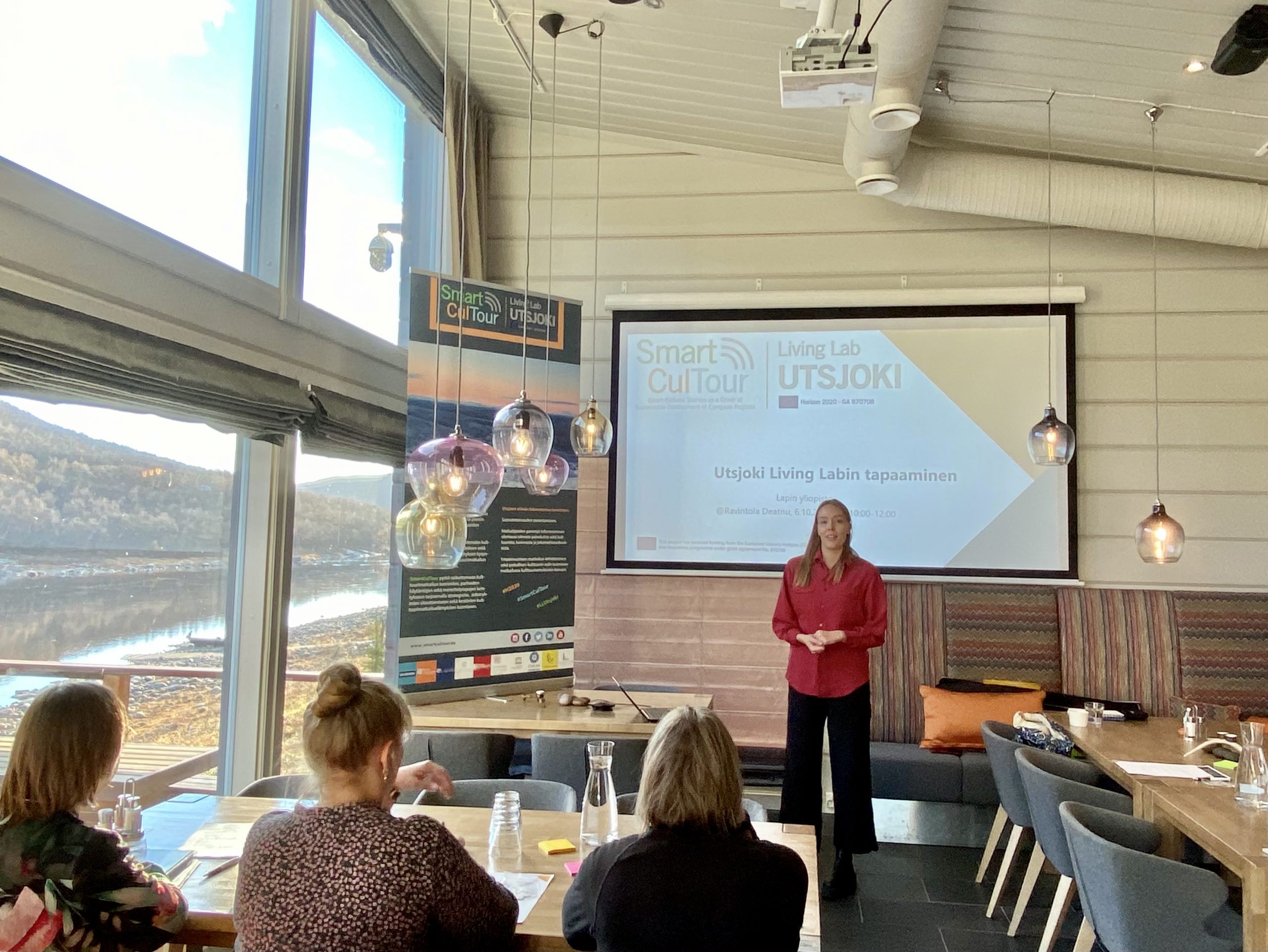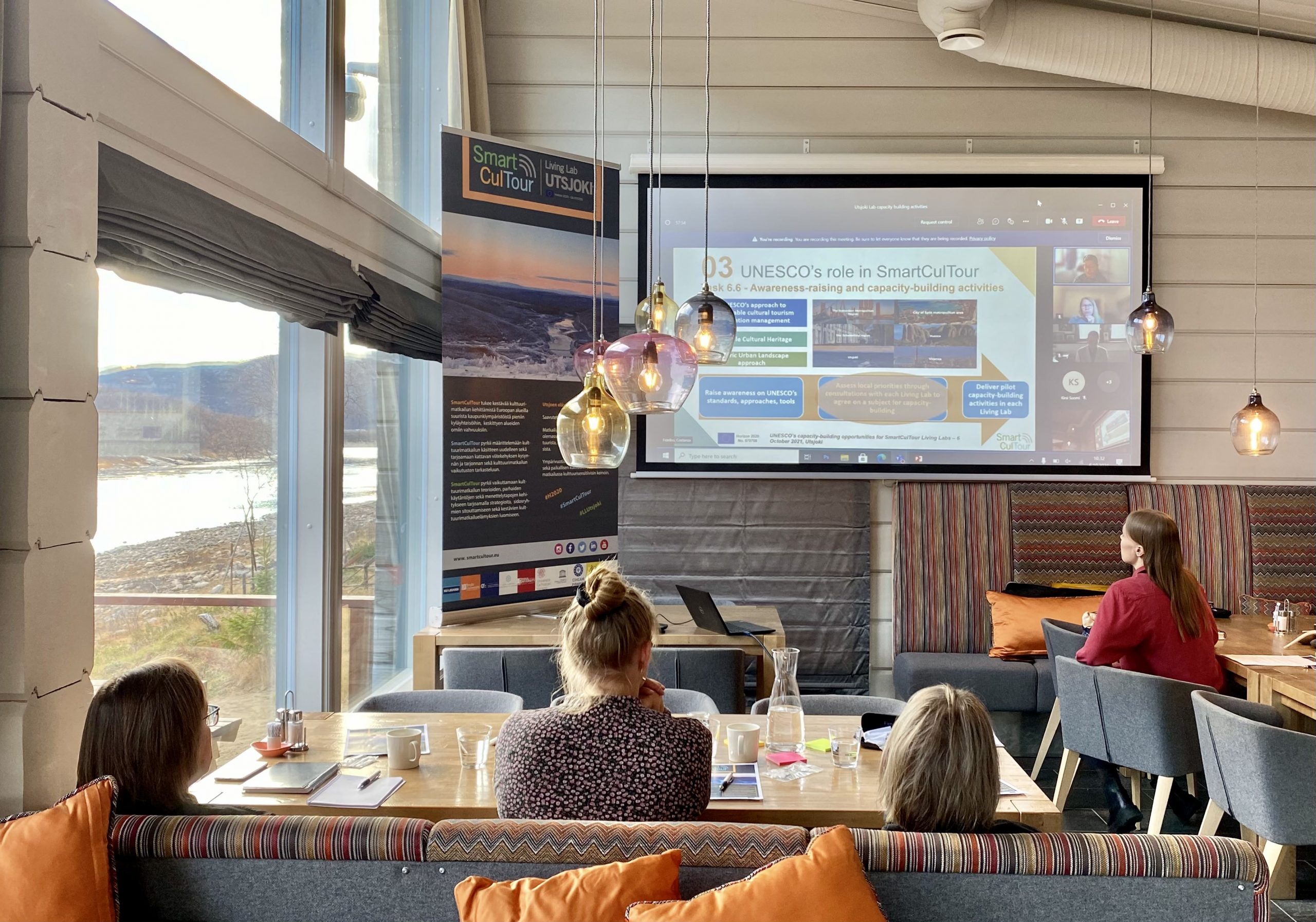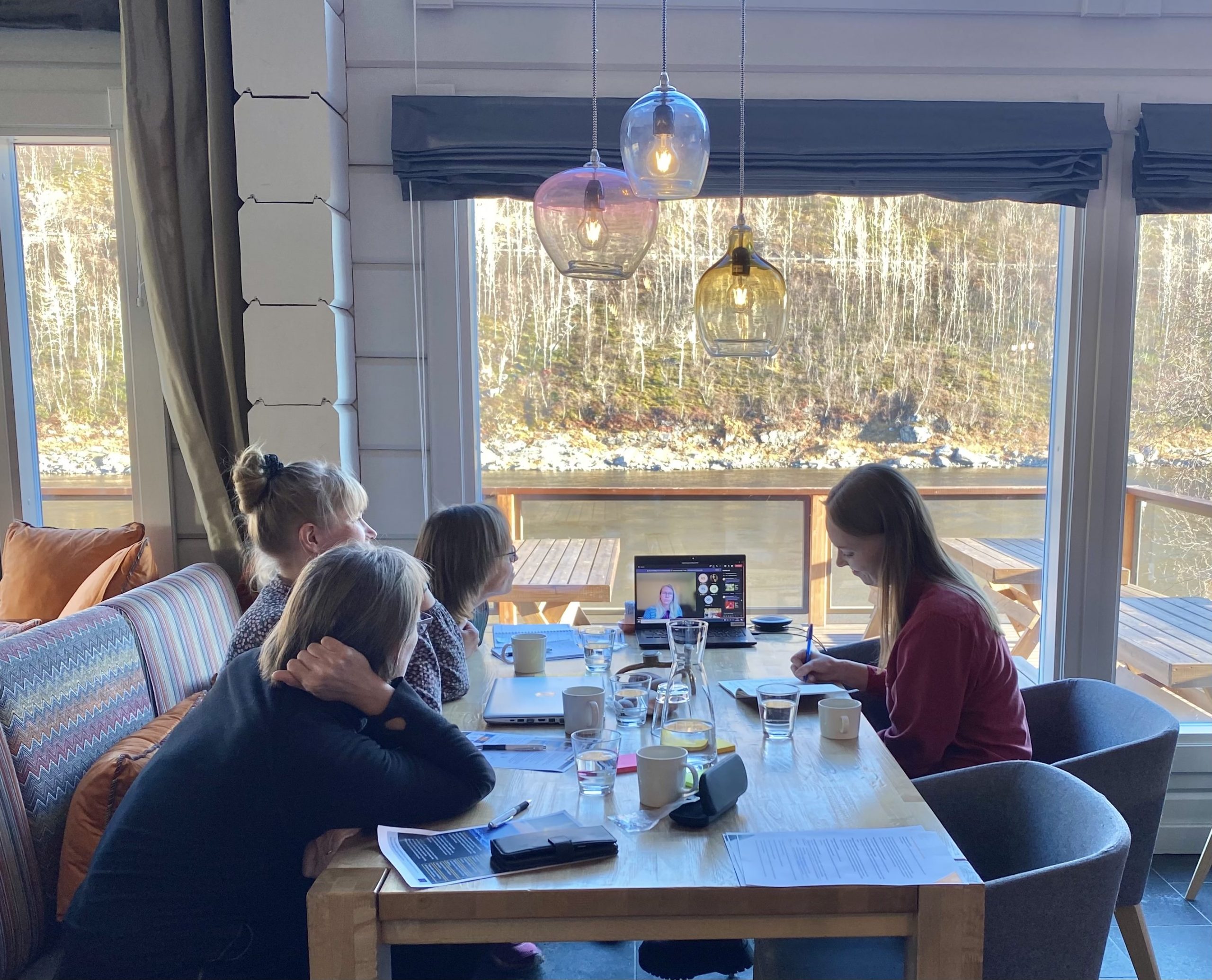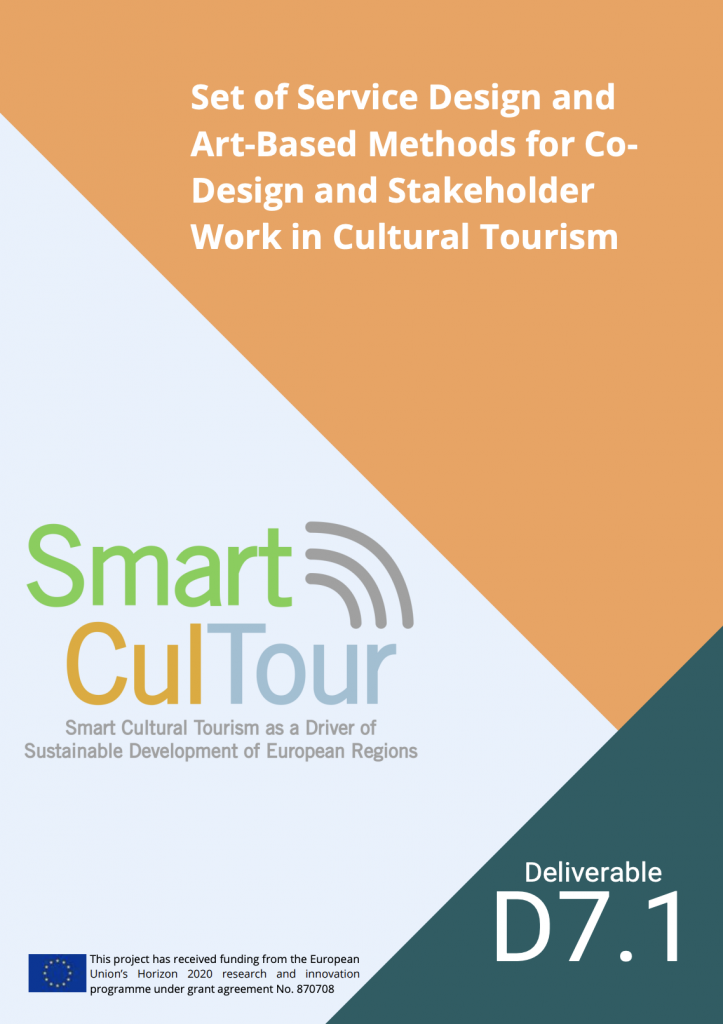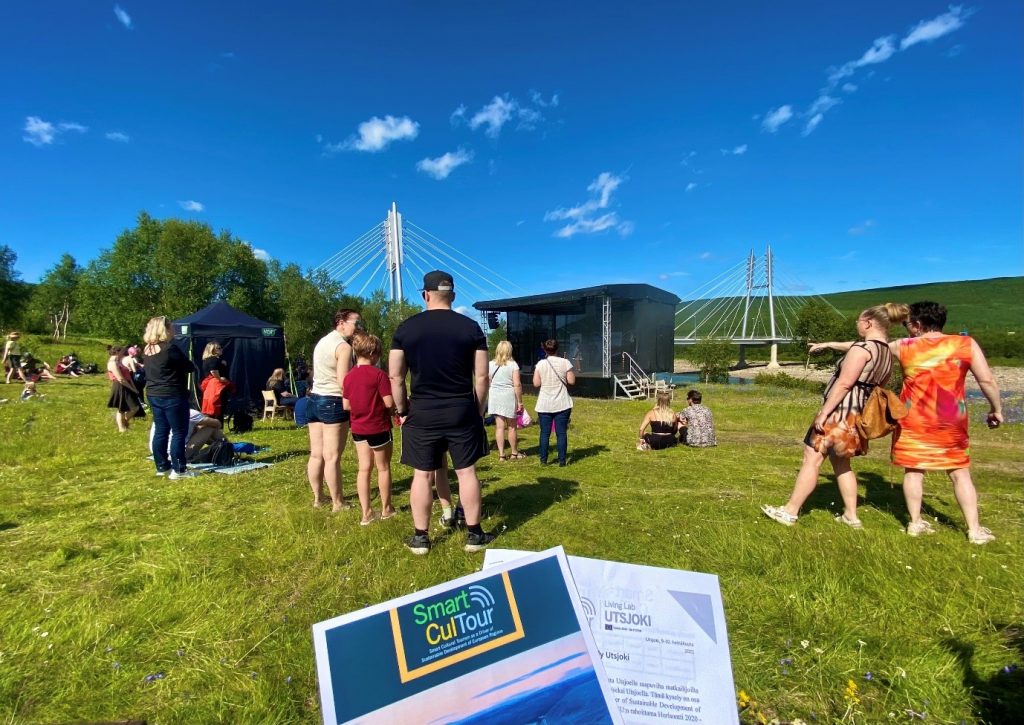Training of Trainers sessions in Huesca
The SmartCulTour project held a two-day Training of Trainers sessions in Huesca, Spain. The sessions were planned for project partners working with their Living Lab stakeholders and tourism development. The aim was to offer more hands-on and practical training for multiple tools created and developed in the project. Let’s look at how the sessions were organized and facilitated from the WP 7 point of view, who took responsibility for the training.
The SmartCulTour project has constructed various tools and methods for developing sustainable cultural tourism. Most of them are already published separately as part of the Set of Service Design and Art-Based Methods for Co-Design and Stakeholder Work in Cultural Tourism or as part of the SmartCulTour Dashboard and the SmartCulTour Game. We selected ten tools and methods and planned a workshop structure where participants systematically progressed from one tool or method to another, utilizing and constructing the data and insights from one tool and using them in a next. The workshop was an overview of a design process, starting from the discover phase and ending in the developing phase.
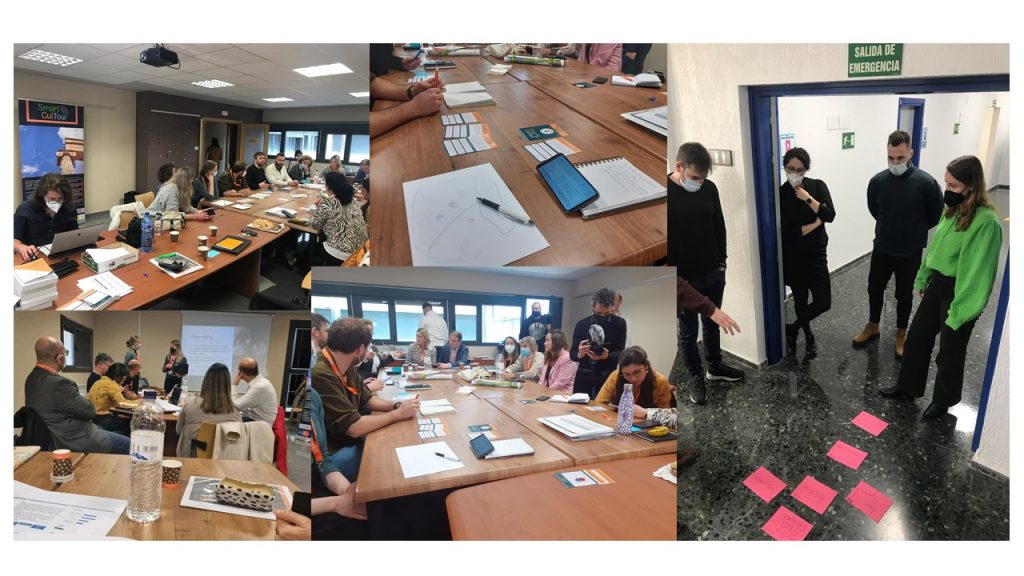
There were multiple purposes for the Training of Trainers session. First of all, we aimed to apply service design and art-based tools developed for the SmartCulTour project. We selected several tools and methods from the toolkit of Set of Service Design and Art-Based Methods for Co-Design and Stakeholder Work in Cultural Tourism. We also clarified when and which tools can be used in which phase of the development process. During the practice-based hands-on work, we exchanged ideas on using the tools for different Living Lab purposes. We also evaluated the tools and methods for further development and the final deliverable 7.3. In addition, the final goal of the Training of Trainers sessions was to get to know each other and introduce some tips for facilitating co-creation workshops. The picture below illustrates the ten different tools and methods presented and trained during the sessions and the design process the tools belong to.
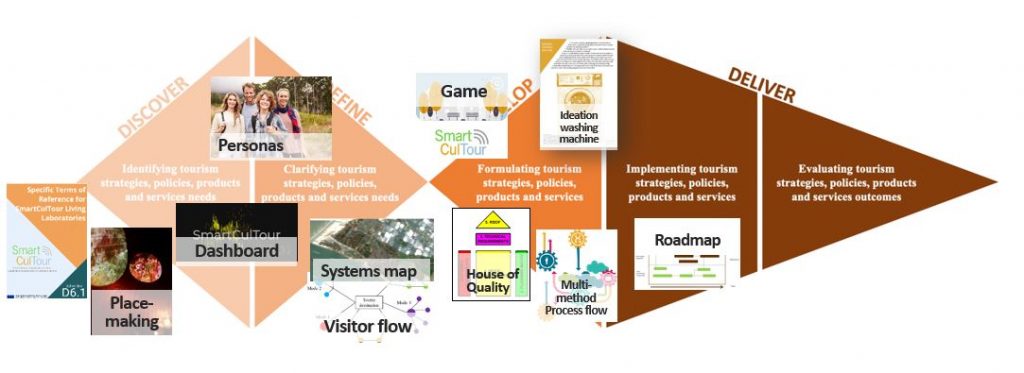
Program
We focused on the Huesca region during the intensive two days while training the tools and methods. It was a logical choice because we were located in the area. Having at least a little bit of a concrete context around us made the training more focused. Let’s take a closer look at what happened during these two days.
Day 1
The first training day was organized in Loarre, the beautiful rural village in Huesca province. We started the Training of Trainers session with the Placemaking method not previously described in the Service Design and Art-Based Methods toolkit. The method involved a pre-assignment sent to participants two weeks earlier. We asked participants to record a 360-degree, 1-minute video of a location that is somehow significant to them. At the beginning of the workshop, we utilized the placemaking method as a stakeholder engagement action. The participants first introduced themselves and explained why the place in the video was meaningful for them. Then the video was shown. The placemaking was a great starting point for getting to know each other and understanding different levels of meaningful places of others. It was fascinating to hear very personal stories from the participants.
After the placemaking, we introduced the Double diamond design process and clarified where the tools and methods belong. We also introduced the Huesca region and the challenges highlighted from the Living Lab data of Huesca. Also, the SmartCulTour Platform was presented from the viewpoint of Huesca region dashboard. This introduction gave participants an understanding of what kind of material they will be working with over two days. As an example of the materials, we pre-developed four tourist personas utilized in follow-up methods.
We then went through the system mapping and visitor flow mapping, both introduced in the Service Design and Art-Based Methods toolkit. Here, we grouped the participants into teams of four people. They got their destination in Huesca region and utilized personas as a part of the tools. The system maps are overviews of tourism, cultural, historical, and entrepreneurial destination resources, which are visualized on a geographical map of the destination. Those can be understood as a library of exciting places, sights, and events that form the cultural tourism system. Visitor flow maps provide a sequenced overview of touchpoints (or activities) that tourists combine while visiting (an area of) a destination. Together these two tools provided insightful knowledge of Huesca region.
We focused on playing the SmartCulTour Game at the end of the day. It was the first time playing and evaluating the game for almost all of the partners. The playing took quite a lot of time, but it was indeed worth it. In particular, Living Lab managers need to understand the game structure from the perspective of both the player and the facilitator. Most participants noticed that taking on the role of a particular type of stakeholder helps to empathize with their stakes and stakeholding issues in cultural tourism development.
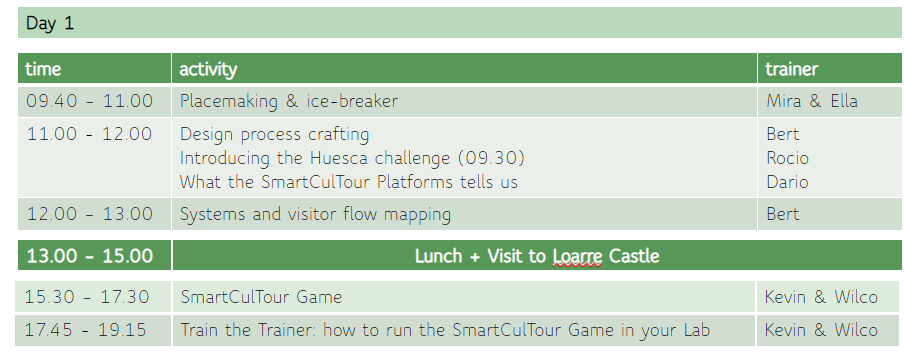
Day 2
We started our next day by traveling from Loarre back to CIHEAM Zaragoza, where we held our morning program. We started the day by introducing the House of Quality method, utilizing the data from the previous day. The House of Quality method was presented using clear examples, which offered an in-depth understanding of using the method. As a result of the House of Quality, some first ideas for cultural tourism interventions were presented, then used in the following tools: Ideation washing machine and Multi-method process flow. The ideation washing machine was a new meth We started our next day by traveling from Loarre back to CIHEAM Zaragoza, where we held our morning program. We started the day by introducing the House of Quality method, utilizing the data from the previous day. The House of Quality method was presented using clear examples, which offered an in-depth understanding of using the method. As a result of the House of Quality, some first ideas for cultural tourism interventions were presented, then used in the following tools: Ideation washing machine and Multi-method process flow. The ideation washing machine was a new method for the partners and used for the first time in tourism development. It aims to give very out-of-the-box ideas combining interventions from House of Quality, keywords of meaningful place in the Placemaking method, and an extra, an action or object that makes a person feel happy or joyful. Combining these three elements, the ideas were brainstormed a little differently than usual. The teams chose one of the ideas and developed it further by using the Multi-method process flow. The method helps participants consider the unique local assets they identify as culturally interesting ones, employing stories and senses to design a sophisticated experience for cultural tourists.
The final tool we used was Destination Design Roadmapping. The tool was used to support destinations to make conscious choices to set up a roadmap to prioritize the implementation of interventions based on resources under development and identified with system mapping. As an overall objective for tourism in destinations and using Destination Design Roadmapping, we can achieve: recent experiences/offerings, value proposition portfolio, experience supporting features, and support resources.

Conclusion
The two-day intensive program was certainly very tiring for many partners. Still, we received a lot of positive and enthusiastic feedback. Many of the methods were seen as valuable and helpful in our Living Lab locations. The application of the tools and methods was also considered during the days and afterward. The WP7 team evaluated the tools and methods using a survey sent to all participants after the Training of Trainers. The tools will be customized based on wishes and ideas, then introduced and described more in-depth in the final SmartCulTour Toolkit on cultural tourism policy development. The tools will assist development of policy recommendations and guidelines for cultural tourism, based on relevant stakeholders’ perceptions of key issues and opportunities. In addition, the WP7 will provide a Training aid for implementing the SmartCulTour Toolkit. These deliverables will be published in autumn 2022.


